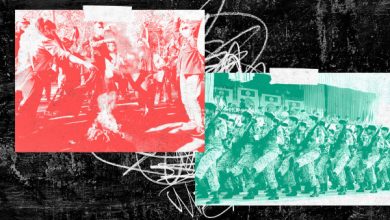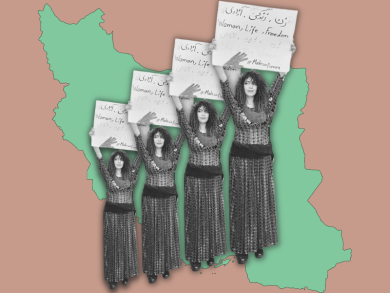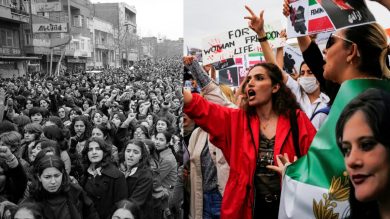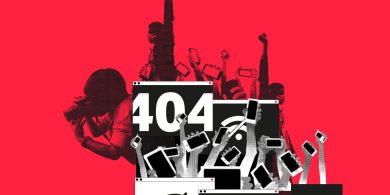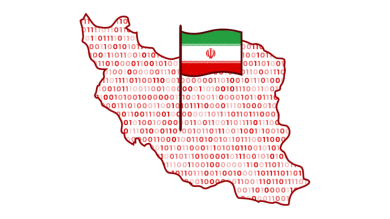In the Islamic Republic of Iran, few institutions represent the machinery of repression as starkly as the Islamic Revolutionary Guard Corps (IRGC). Originally created to protect the ideals of the 1979 revolution, the IRGC has since transformed into a powerful, unelected force that holds sweeping control over Iran’s military, economic, and political spheres. But beyond these domains, the IRGC plays a chilling role in enforcing ideological conformity — especially when it comes to controlling women.
This piece explores how the IRGC targets women through fear, surveillance, and violence, but also how Iranian women resist, becoming the vanguard of freedom and democratic change. In a country where a simple act like removing a headscarf is deemed subversive, women have emerged as the most persistent and powerful agents of resistance.
1. The IRGC as the Enforcer of Gender Oppression
Guardians of “Moral Order”
While institutions like the Gasht-e Ershad (morality police) are often seen on the streets, it is the IRGC’s intelligence and security arms that operate behind the scenes to enforce compliance. The IRGC monitors, identifies, and arrests women who publicly defy regime norms — especially those who protest against compulsory hijab laws, gender segregation, or political repression.
This control manifests in three ways:
• Public repression: Raids on women’s protests, violent arrests, and suppression of women’s rallies.
• Private intimidation: Harassment of families, surveillance, forced confessions, and psychological pressure.
• Systemic control: Enforcing discriminatory laws that limit women’s freedom in dress, work, education, and public life.
2. Fear as a Tool of Obedience
The Threat of Prison and Torture
Women in Iran know that activism often comes at a high price. Under the IRGC’s authority, many are taken to notorious prisons like Evin or Qarchak, where they face:
• Torture and solitary confinement
• Sexual harassment or assault during interrogation
• Denial of medical treatment
• Forced confessions broadcast on state television
Activists like Narges Mohammadi, Nasrin Sotoudeh, and Sepideh Gholian have endured all of the above — yet continue to defy the regime from behind bars.
Surveillance State
The IRGC also uses modern surveillance to target women. With control over Iran’s cyber police and access to data from internet service providers, the regime tracks:
• Social media posts about women’s rights
• Photos of unveiled women
• Online organizing and messaging apps
This digital surveillance enables the IRGC to preemptively arrest and silence women before public protests even begin.
3. Controlling Public Spaces and Narratives
Control Over Culture and Media
Women in Iran face massive censorship in film, literature, and journalism. The IRGC has control over state media, which:
• Smears women activists as “Western agents” or “morally corrupt.”
• Publishes forced apologies or “confessions” from arrested women.
• Erases female figures from official narratives, even in sports and history.
Independent women journalists are frequent targets. For example, Niloofar Hamedi and Elahe Mohammadi, who covered Mahsa Amini’s story, were arrested and charged with “colluding with foreign powers” — a typical IRGC tactic to criminalize truth-telling.
4. Resistance: Defying the Fear
The Woman at the Heart of the Revolution
Since the death of Mahsa Amini in IRGC custody in 2022, Iran has witnessed an unprecedented uprising led by women chanting: “Women, Life, Freedom.” This resistance is not just against the hijab — it is against a regime that sees women’s agency as a threat to its survival.
Civil Disobedience
Women resist IRGC repression through everyday acts:
• Walking unveiled in public.
• Holding signs or organizing underground gatherings.
• Using social media to share photos and messages of defiance.
These actions, while small, chip away at the regime’s control and keep the flame of resistance alive.
5. The Role of the International Community
Call for Sanctions and Designations
The IRGC has already been designated as a terrorist organization by the United States, Bahrain, and Saudi Arabia. There are ongoing calls for the European Union, Canada, and others to do the same. This designation would:
• Limit the IRGC’s global financial activity
• Block international travel for commanders
• Signal moral support for Iranian women and dissidents
Support for Women’s Voices
Global solidarity can take many forms:
• Amplifying Iranian women’s stories through media, art, and journalism.
• Pressuring governments to prioritize human rights in dealings with Iran.
• Providing digital security tools to Iranian activists.
• Supporting asylum and legal aid for those fleeing persecution.
Conclusion: Women Will Lead the Change
The IRGC seeks to control women through fear, but what it has unleashed is a generation of fearless women who are no longer afraid to demand freedom, equality, and dignity. These women are redefining resistance in Iran, turning fear into fuel for revolution.
From the streets of Tehran to the prison cells of Evin, their voices rise in unison:
Join Our Newsletter!
Stay informed with the latest updates, news, and ways to take action in the fight for justice and global security. Sign up now to get updates delivered straight to your inbox!

